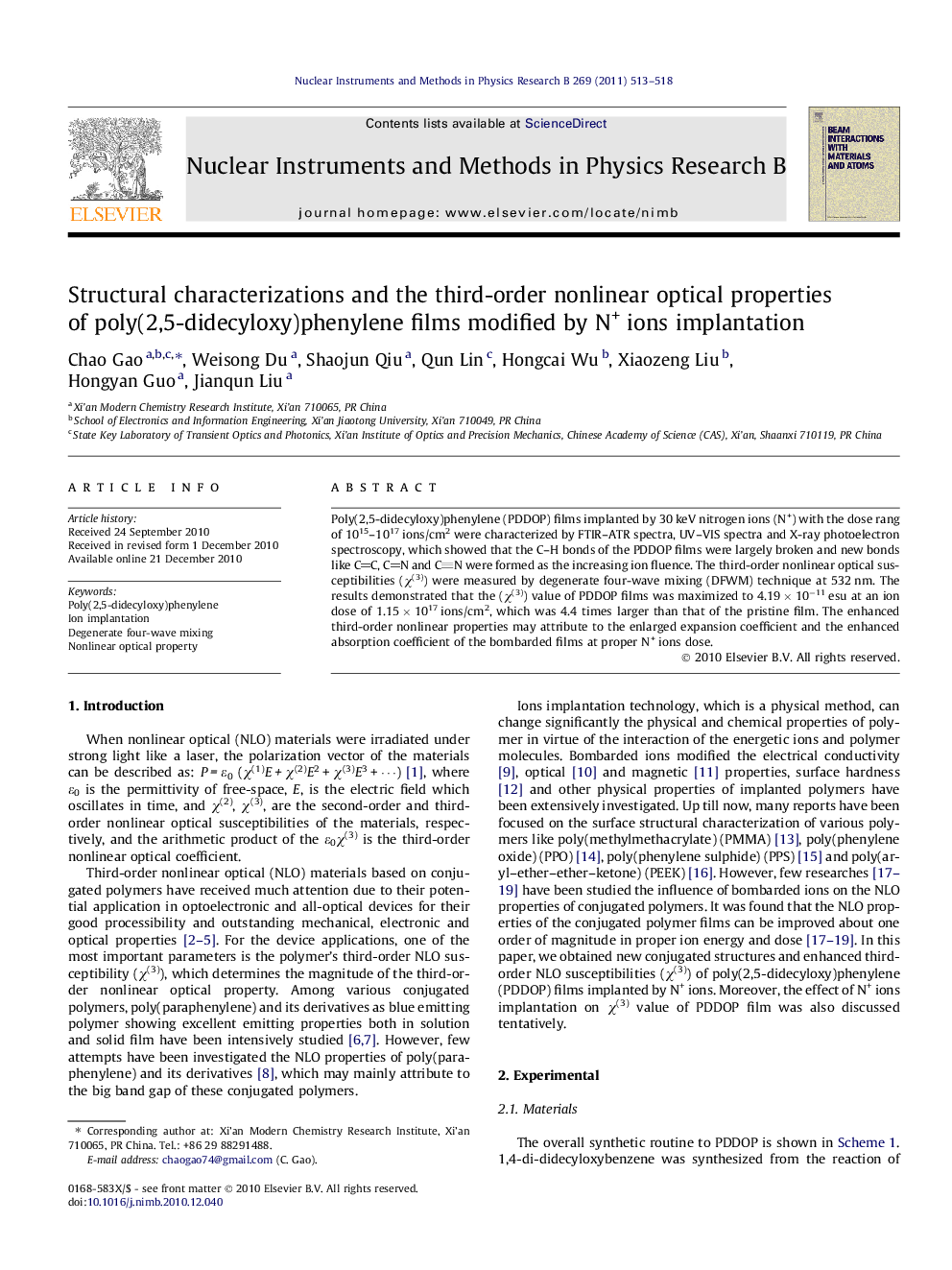| Article ID | Journal | Published Year | Pages | File Type |
|---|---|---|---|---|
| 1683261 | Nuclear Instruments and Methods in Physics Research Section B: Beam Interactions with Materials and Atoms | 2011 | 6 Pages |
Abstract
Poly(2,5-didecyloxy)phenylene (PDDOP) films implanted by 30Â keV nitrogen ions (N+) with the dose rang of 1015-1017Â ions/cm2 were characterized by FTIR-ATR spectra, UV-VIS spectra and X-ray photoelectron spectroscopy, which showed that the C-H bonds of the PDDOP films were largely broken and new bonds like CC, CN and CN were formed as the increasing ion fluence. The third-order nonlinear optical susceptibilities (Ï(3)) were measured by degenerate four-wave mixing (DFWM) technique at 532Â nm. The results demonstrated that the (Ï(3)) value of PDDOP films was maximized to 4.19Â ÃÂ 10â11Â esu at an ion dose of 1.15Â ÃÂ 1017Â ions/cm2, which was 4.4 times larger than that of the pristine film. The enhanced third-order nonlinear properties may attribute to the enlarged expansion coefficient and the enhanced absorption coefficient of the bombarded films at proper N+ ions dose.
Related Topics
Physical Sciences and Engineering
Materials Science
Surfaces, Coatings and Films
Authors
Chao Gao, Weisong Du, Shaojun Qiu, Qun Lin, Hongcai Wu, Xiaozeng Liu, Hongyan Guo, Jianqun Liu,
